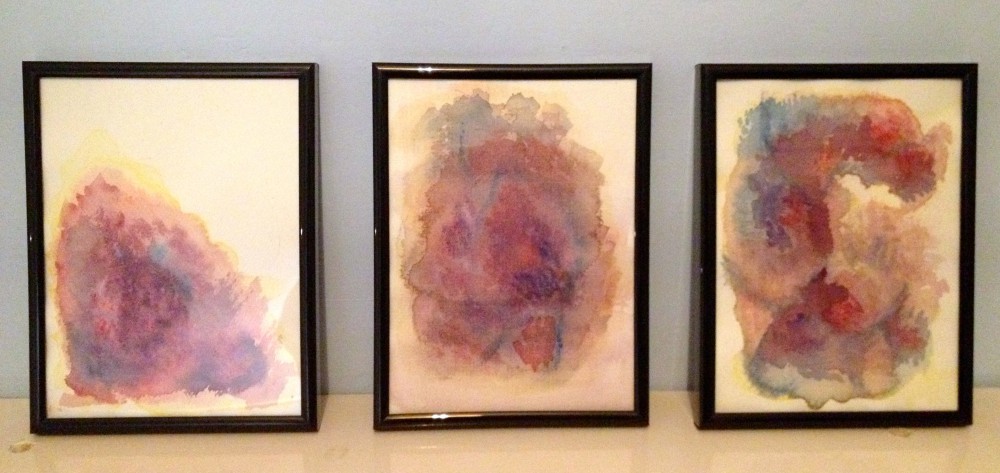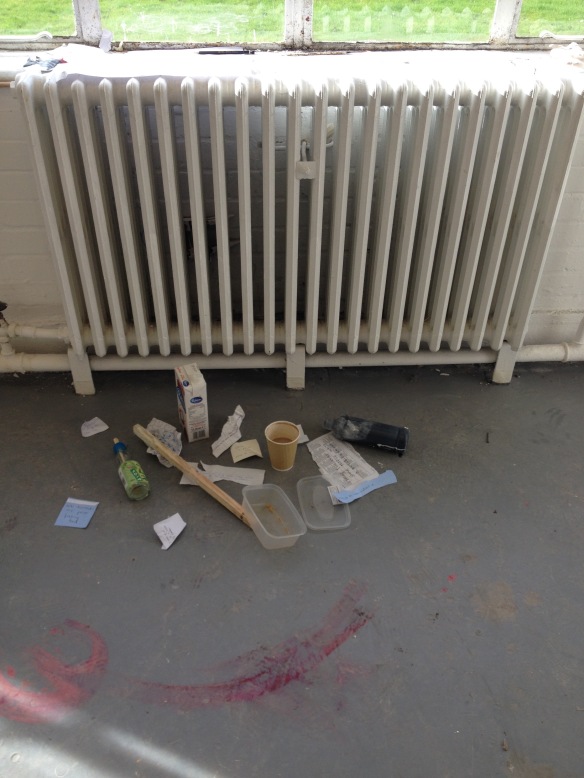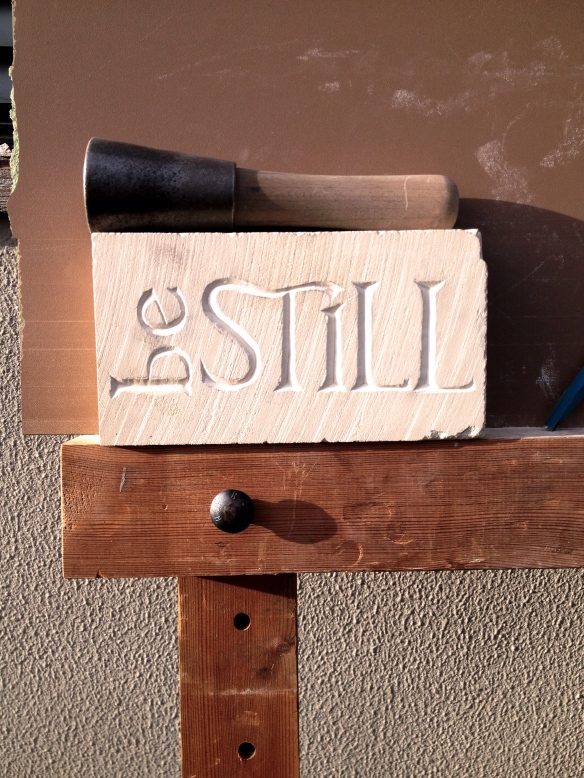For our studio group, we were invited by our tutor to come prepared to discuss a piece of work or artist that we distinctly disliked. Below is my presentation on the work of Mike Kelley, with particular focus on my dislike of his transgressional works;
Having completed this task, I was even more secure in my own studio practise, knowing that I wanted to continue addressing the concept of art being used as a form of therapy. As such, and having been inspired by my investigation into the concepts and artists that arose from my VIVA, I was acutely aware of such themes when Pil did a short presentation of some work he was particularly interested in.
I then had a 1-1 meeting about my practise where I discussed my ideas for progression into the next term. I had planned to use the patches of fabric people had sewn into as part of my previous term’s perforative piece, and create an object with them that related to each individual, encouraging them to see it every day and thus begin to adopt the thing they initially wanted to uphold. With this being our first meeting, however, I had to discuss my concept from the previous term alongside this proposal and I felt I was unable to fully articulate my thoughts. As a result, during this discussion I was encouraged to look at a performative experiment, whereby people of all different races, political views and social views were asked to create a canvas of works and, upon completion, invited to add to each others’. After just 20 minutes, the individuals had almost completely destroyed each others’ works. Having a discussion following this about works that shock and bring about discomfort for the viewer, I was confronted with two choices;
Conform to the pattern of the art world and begin creating work that aims to be transgressional, revealing human characteristics that show no hope of a brighter future
or,
Continue making my work with a view to do the exact opposite, revealing the concept of hopeful possibility for a positive trajectory of mental wellbeing
Feeling overwhelmed by my inability to convey the importance of art therapy, and that resulting in the suggestion of pursuing abjection in my work, I felt even more compelled to achieve the latter. But, having had these discussions, I was unsure as to where I should take my practise and thus fell into the well-known state of ‘Artist’s block’. This lasted for two weeks. During Week 6, I engaged in several activities; woodblock printing, stone carving and the gallery tour with Tim in London. This time was beneficial, allowing me to have a break from my own work and be able to recognise aspects of others’ works that were particularly attractive. I was led to consider the way art should not be confined to violations of conventions purely for the sake of it, and was reminded of previous study into transgressional art where I discussed ‘what if it could be better understood as provocation of quandary, inviting transgressions in a therapeutic context to be considered?’






